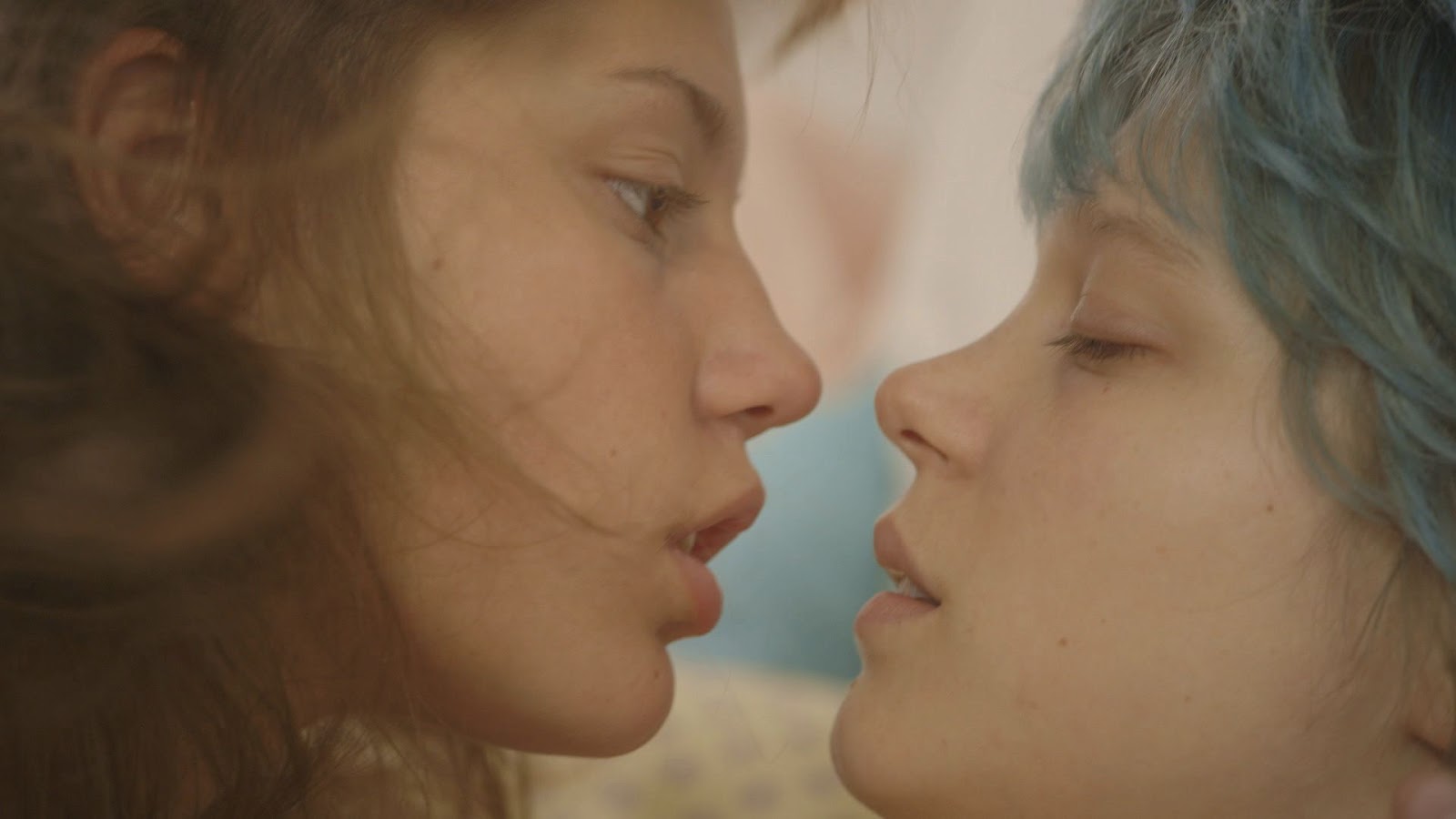
News
Summers Will Not Finish Semester of Teaching as Harvard Investigates Epstein Ties

News
Harvard College Students Report Favoring Divestment from Israel in HUA Survey

News
‘He Should Resign’: Harvard Undergrads Take Hard Line Against Summers Over Epstein Scandal

News
Harvard To Launch New Investigation Into Epstein’s Ties to Summers, Other University Affiliates

News
Harvard Students To Vote on Divestment From Israel in Inaugural HUA Election Survey
Realism and Awe in "Blue"
Blue is the Warmest Colour--Dir. Abdellatif Kechiche (Sundance Selects)--4 stars

There is nothing intrinsically shocking in Abdellatif Kechiche’s “Blue is the Warmest Colour.” There are introductions, conversations, arguments. There are dinner parties, chance encounters, sexual trysts. In short, things that happen to everyone. What’s shocking is that these things all appear on screen. Most unprecedented are the lengthy, explicit sex scenes, but the entire film is surprising in its commitment to naturalism and ordinary life. Its steadfast realism is not quite revolutionary, but “Blue is the Warmest Colour” is still a deeply affecting film, bolstered by excellent performances and, somewhat improbably, its three-hour running time.
When “Blue” won the Palme d’Or at this year’s Cannes Film Festival, the jury awarded the prize not only to Kechiche, but to the film’s two stars, Léa Seydoux and Adèle Exarchopoulos. Both do stunning work, but special credit is due to Exarchopoulos, who plays Adèle, the young woman at the heart of the film—it’s not for nothing that the French title is “La Vie d’Adèle - Chapitres 1 & 2” or “The Life of Adèle - Chapters 1 & 2.” Adèle is a high schooler without guile or direction. She’s a smart girl, but dislikes how her teachers force her to overanalyze her favorite books. Only when she falls in love with the older, cooler, and more liberated Emma (Seydoux) does she gain some direction in life—or, more accurately, something that seems like direction. “Blue” is emphatically not the story of a love affair; rather, it’s the story of a young woman who has a love affair.
As such, the movie depends a great deal on Exarchopoulos’s performance. Artlessness is not easy to act—doing so is nearly a contradiction in terms—but Exarchopoulos excels as a girl who totally lacks affect or guile. Though Kechiche could have played this for laughs—a scene in a lesbian bar is rife with comic possibility—he’s far more fair to the character. The scene in the bar instead sparkles with awe and mystery, charged with Adèle’s thrill of entering a world unknown. Emma is a different beast: she’s rebellious, artistic, and comes from wealth. Seydoux gives her a vivacious, immediately attractive spirit—you’re reminded of why Owen Wilson was so taken with her in “Midnight in Paris.” Both actors imbue their characters with real depth, but what really establishes Emma and Adèle is the sheer length of the film. At 179 minutes, “Blue” has a running time worthy of most epic films; instead of filling those three hours with a labyrinthine plot, however, Kechiche extends his scenes until they have the rhythm of real life.
When Adèle and Emma converse, exposition is nowhere to be found—the dialogue is startlingly naturalistic. Even minor characters get great lines, best seen in a scene late in the film, when Adèle and Emma host a dinner party. There are many notable characters in this lengthy setpiece, the most memorable being an actor who gets work in American films because he speaks Arabic—“They like the jihad thing,” he explains. The film itself has the feel of a great conversation—it rushes by in the moment, but contains an astonishing amount of information.
Kechiche’s devotion to realism, however, does not prevent him from developing a distinct and effective style. Much of “Blue” is shot in tight close-ups, creating a tense style heightened by the almost total lack of non-diegetic sound. When Kechiche uses a shot that includes a character’s body in full, the sense of relief is nearly palpable. The great French director Éric Rohmer decried the close-up, claiming it separated the actor from his environment. But that may very well be Kechiche’s goal—“Blue” is more or less a film exclusively focused on its two heroines, and when the camera hones in on one of their marvelously expressive faces, the effect is mesmerizing. Why bother showing the world when Exarchopoulos’s face already does so?
“Blue” is not flawless—despite all the virtues of its length, it does drag a bit at the end—and its already notorious sex scenes will keep the prudish from attending. Those who do see “Blue,” however, will be rewarded with a sprawling, ambitious, and wholly satisfying piece of work. Kechiche has, in the end, provided us with an epic—an epic centered around normal life, perhaps, but with tremendous emotional power.
—Staff writer Petey E. Menz can be reached at petey.menz@thecrimson.com.
Want to keep up with breaking news? Subscribe to our email newsletter.
